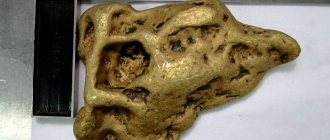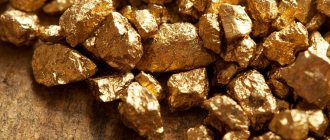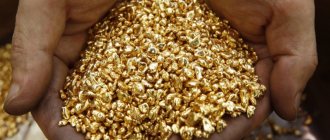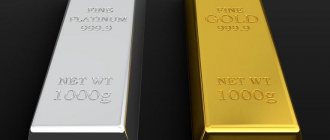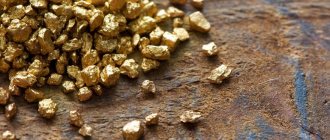Gold mining in Russia: how everything works in this market
Boomin’s colleagues and partners from Uniservice Capital conducted more research on the state, main trends and prospects of the Russian gold mining market. In the analytical article that we bring to your attention, you will find answers to questions about how the gold mining business is organized, who creates supply and demand in the market, what elements state regulation consists of, and what investors should pay attention to in order to minimize risks.
- how much gold is mined in Russia annually
- quarry and ore mining;
- how much is exported, how is it used
- on the domestic market;
- what are the indicators of a gold mining company
- It is worth paying attention to the investor;
- market forecast.
Russia is one of the three largest gold-mining countries. At the end of 2021, it took second place in terms of production volumes, beating Australia, producing 331 tons of gold over the year / 9.6% of world production. Broadly speaking, there are three ways to extract gold: river sand washing, mining of gold ore, and recycling (refining jewelry and non-jewelry).
The bulk of gold (more than 70%) is mined in large quarries, both open-pit and in mines (the deepest gold-bearing mines in the world are located in South Africa, depth from 3 to 3.8 km). The second method is loose (the share of production in 2010-20 is 26-30%). This method is not popular with large companies due to lower resource potential and seasonality (extraction is possible only in the warm season).
In Russia, the demand for gold in the period 2014-19. formed the Russian Central Bank, purchasing more than 60% of the gold produced, thereby replenishing the gold and foreign exchange reserve (a hedging tool in case of economic instability, since at such moments the price of gold rises when most assets significantly lose value). The remaining part could be purchased by Russian banks and jewelry manufacturers. In 2021, after the Russian Central Bank stopped purchases and a drop in demand from jewelers, about 90% of gold was exported, mainly to the UK. This was facilitated by the Government Decree of April 17, 2021, according to which the Ministry of Industry and Trade can now issue general licenses for the export of gold and silver bullion. Before this, licenses were one-time and tied to a specific contract.
In the first half of 2021, almost all of the gold produced was exported (more than 95%). In turn, the global demand for gold at the end of 2021 had the following structure: 38% - jewelry industry, 9% - technology, 7% - direct purchases by the Central Banks of different countries, 23% - coins and small bars (over-the-counter investment gold, in mainly in demand among private investors), 23% - ETFs and other investment products (funds buy gold and include it in portfolios, shares of which are then sold on the stock exchange).
Thus, 47% is used in industry (jewelry and other technology industries), the remaining 53% goes for investment purposes (coins, ETFs, purchases of securities, etc.). During economic growth, as a rule, there is demand for gold from industry, and during periods of economic instability, investment demand predominates.
Thus, against the backdrop of the pandemic, the price of gold in 2021 increased by 70%, making gold mining companies the beneficiaries of the pandemic.
The state is constantly involved in regulating the gold mining industry, issuing small regulations that relate to specific aspects of the work of gold miners. Key resolutions issued in 2019-2020:
- resolution on the issuance of general export licenses dated April 17, 2021 - this simplified the export of gold from the Russian Federation (described in the paragraph above);
- In July 2021, changes to the order of the Ministry of Natural Resources came into force, which regulates the procedure for considering applications for subsoil use rights. In accordance with these changes, the Ministry of Natural Resources expanded the application of the declarative principle to areas with predicted resources of solid minerals of categories P1 and P2, located in the Far East and the Arctic.
- The Government is currently considering the issue of legalizing private gold mining. Individual entrepreneurs will be able to mine gold using a non-industrial method (loose method) at a depth of up to 5 meters. It is planned to launch an electronic platform where individuals will be able to select areas with balance reserves of up to 20-30 kg.
- You can also note the proposals of the Chamber of Commerce and Industry to establish a zero VAT rate for refineries when selling refined precious metals to Gokhran and banks, as well as when purchasing mineral raw materials from mining companies.
At the time of writing this article, in Russia only legal entities that have received special licenses for the use of subsoil in a certain area can officially mine gold.
Such licenses for gold mining sites are obtained as part of auctions held by the federal agency for subsoil use. Prices for licenses vary depending on the availability of the site, the volume and quality of confirmed reserves, and can start from 500-600 thousand rubles. up to several billion.
The five largest gold miners in Russia consist of 4 domestic companies and one Canadian
Kinross Gold
. At the end of 2021, these 5 companies accounted for about half of all gold mined in the Russian Federation (51.5%). As of the end of August 2021, there were about 700 companies in Russia with revenues of more than 1 million rubles. per year engaged in the mining of gold, silver and platinum group metals. From the perspective of SME classification, companies with revenue of more than 2 billion rubles. accounts for up to 90% of all production in the Russian Federation.
Among Russian gold mining groups, six are public joint stock companies. 2 more companies planned to hold an IPO: NordGold
(owned by the Mordashov family, owner of Severstal) on the London Stock Exchange and
Gvgold
on the Moscow Exchange. Both companies postponed placements due to unstable market conditions.
Lengthy and detailed annual and interim reports are available for large publicly traded gold miners, containing a wealth of information of all kinds. When analyzing gold miners, we advise you to first pay attention to operating indicators, rather than financial indicators (analysis of balance sheet indicators is secondary here).
- The financial performance of gold mining companies will directly depend on the quality of gold reserves.
It is important to pay attention to the volume of reserves and the period to which these reserves are sufficient (the presence of a JORC report will be a big plus), as well as the share of gold in the ore at current production. The higher the share of gold, the better, because During the mining process, less ore needs to be processed, therefore, unit operating costs are lower. It is also important to understand whether the development of future deposits will lead to an increase in mining costs (low gold content in the rock - less than 0.5 grams per ton, high proportion of refractory ores)?
- the second important indicator will be AISC - All-In-Sustaining-Cost, or the total unit cost of gold mining, usually published in USD per ounce.
Collectively, these costs include production costs, administrative costs, geological exploration costs and the minimum required CAPEX for stable operation. Because Since the price of gold is characterized by pronounced volatility and is difficult to predict, the costs of gold mining come to the fore. The lower the costs, the greater the margin of safety a gold miner has, and the less susceptible he is to the negative impact of lower prices. The median AISC value for the world's major producers is about $1 thousand per ounce. One of the world leaders in this indicator is the Russian PJSC Polyus with an AISC of $604 per ounce in 2020. These indicators are published in press releases, presentations by miners and in annual reports.
- In the current realities, CAPEX of miners is also relevant, aimed at developing technologies and capacities for processing refractory ores.
Refractory ores are those from which it is difficult to extract gold using traditional technologies. As the quality of deposits gradually deteriorates and new ones are discovered less and less, it becomes extremely important for mining companies to develop new ways to obtain gold from complex ores. Currently, gold production from refractory ores already accounts for 20% of total production. It is also important to understand whether the future CAPEX will be financed with equity or debt, i.e. whether the debt burden is planned to increase in the future due to CAPEX.
We can include the following as the main risks: lack of an audit of the quality of reserves, a high proportion of refractory ores in deposit areas, which entails high production costs, currency risks (the largest Russian gold miners have revenue and debt in dollars / debt is only partially in rubles, and expenses are more 90% ruble), volatility of gold prices and difficult predictability of the economic situation, potential debt M&A (and LBO) transactions of large market participants (an illustrative example of the Russian Highland Gold Mining
, until 2021 the company was controlled by a group of shareholders, including Roman Abramovich, and during 2021 it was bought out by Vladislav Sviblov.
Key management transferred to PJSC Petropavlovsk
, the buyout was carried out using a loan of up to 1 billion rubles. As a result, the debt burden may increase from the normal level for the group of 1.1x-1.2x to 5x in terms of Debt/EBITDA against the background of the departed key management and an aggressive CAPEX program for the development of new fields). Key risks also include environmental risks associated with gold mining and the gradual depletion of reserves.
Demand for gold grew steadily throughout 2020 due to market uncertainty amid pandemic restrictions around the world.
The result of increased demand was the renewal of the historical maximum price in August - at that moment gold cost more than $2,060 per ounce. Towards the end of 2021, vaccinations began in many countries and the expected exit from gold as a defensive asset occurred, the price of gold dropped by 15% by March 2021, to $1,700 per ounce.
In the second quarter of 2021, prices rose again to $1,900 per ounce due to US inflation rising to 5% annualized (13-year high). In July-August, prices remain in the range of $1,700-$1,800 per ounce.
Among the drivers for the fall in gold prices are progress in vaccination against coronavirus. In the rest of September and the fourth quarter of 2021, inflation in the United States and the Fed’s rhetoric can be identified as drivers of the price of gold (accelerated inflation causes an increase in the cost of gold, when the Fed’s measures act on the metal in the opposite direction). At the same time, the influence of the COVID-19 factor will gradually decrease. As a result, it is impossible to clearly say the direction of price movement; the dynamics are most likely to be volatile. At the same time, a return of gold to prices of 2,000 per ounce is unlikely.
Who mines the “yellow metal”
➊ OJSC Polyus Gold. The largest gold mining corporation, engaged in full cycle mining, including refining and production of bars. Geography of activity: Krasnoyarsk Territory, Irkutsk, Magadan and Amur regions. Stable average annual income is about half a billion US dollars. Production rates are up to 50 tons annually.
➋ JSC Polymetal is the second most important enterprise in the industry, operating in rich deposits of the Khabarovsk region. On average, the company supplies the state and commercial banks with 23-24 tons of pure gold per year.
➌ Kinross Gold is a foreign company with founders in Canada, operating in Chukotka since 1995. The main influx of precious metal, about 23 tons annually, comes from the famous Kupol deposit, in the belly of which about 65 tons of gold rock are hidden.
Among the major players in this market, it is worth mentioning the enterprises Buryatzoloto, Nordgold, Severnaya Zolotorudnaya, GC Petropavlovsk and the Severstral concern. It is also necessary to note the 100% liquidity and profitability of almost all gold mining companies in the country. This suggests that this strategic industry has impressive prospects for development in its main and related areas.
